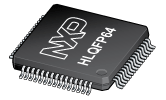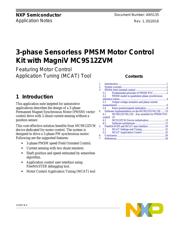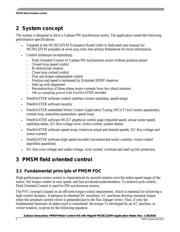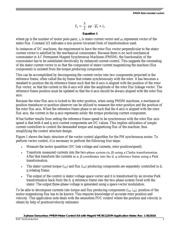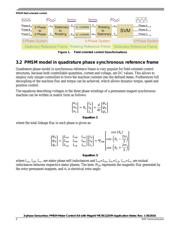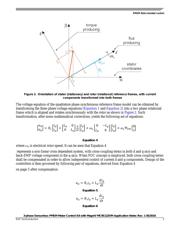herunterladen

© NXP B.V.
3-phase Sensorless PMSM Motor Control
Kit with MagniV MC9S12ZVM
Featuring Motor Control
Application Tuning (MCAT) Tool
1 Introduction
This application note targeted for automotive
applications describes the design of a 3-phase
Permanent Magnet Synchronous Motor (PMSM) vector
control drive with 2-shunt current sensing without a
position sensor.
This cost-effective solution benefits from MC9S12ZVM
device dedicated for motor control. The system is
designed to drive a 3-phase PM synchronous motor.
Following are the supported features:
• 3-phase PMSM speed Field Oriented Control.
• Current sensing with two shunt resistors.
• Shaft position and speed estimated by sensorless
algorithm.
• Application control user interface using
FreeMASTER debugging tool.
• Motor Control Application Tuning (MCAT) tool
NXP Semiconductor
Document Number: AN5135
Application Notes
Rev. 1
,
05/2016
1 Introduction ........................................................................ 1
2 System concept ................................................................... 2
3 PMSM field oriented control .............................................. 2
3.1 Fundamental principle of PMSM FOC ................... 2
3.2 PMSM model in quadrature phase synchronous
reference frame ...................................................................... 4
3.3 Output voltage actuation and phase current
measurement ......................................................................... 6
3.4 Rotor position/speed estimation .............................. 8
4 Software implementation on the MC9S12ZVML128 ...... 10
4.1 MC9S12ZVML128 – Key modules for PMSM FOC
control 10
4.2 MCS12ZVM Device initialization ........................ 13
4.3 Software architecture ............................................. 15
5 FreeMASTER and MCAT user interface ......................... 30
5.1 MCAT Settings and Tuning .................................. 31
5.2 MCAT Application Control .................................. 35
6 Conclusion ........................................................................ 36
7 References ........................................................................ 36
Contents

